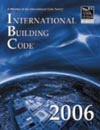|
|
|
|
|
|
|
| SECTION 508 MIXED USE AND
OCCUPANCY
508.3 Mixed occupancies.
Each portion of a building shall be individually classified
in accordance with Section 302.1.
Where a building contains more than one occupancy group, the
building or portion thereof shall comply with Sections 508.3.1,
508.3.2, 508.3.3 or a combination of these sections.
Exceptions:
1. Occupancies separated
in accordance with Section 509.
2. Where required by Table
415.3.2, areas of Group H-1, H-2 or H-3 occupancies
shall be located in a separate and detached building or
structure.
508.3.1 Accessory occupancies.
Accessory occupancies are those occupancies subsidiary to
the main occupancy of the building or portion thereof. Aggregate
accessory occupancies shall not occupy more than 10 percent
of the area of the story in which they are located and shall
not exceed the tabular values in Table
503, without height and area increases in accordance
with Sections 504 and 506
for such accessory occupancies.
Exceptions:
1. Accessory assembly areas
having a floor area less than 750 square feet (69.7
m2) are not considered separate occupancies.
2. Assembly areas that
are accessory to Group E occupancies are not considered
separate occupancies except when applying the assembly
occupancy requirements of Chapter 11.
3. Accessory religious
educational rooms and religious auditoriums with occupant
loads of less than 100 are not considered separate occupancies.
508.3.1.1 Occupancy classification.
Accessory occupancies shall be individually classified
in accordance with Section 302.1.
Code requirements shall apply to each portion of the building
based on the occupancy classification of that accessory
space, except that the most restrictive applicable provisions
of Section 403 and Chapter 9 shall
apply to the entire building or portion thereof.
508.3.1.2 Allowable area
and height. The allowable area and height of the building
shall be based on the allowable area and height for the
main occupancy in accordance with Section
503.1. The height of any accessory occupancy shall
not exceed the tabular values in Table
503, without height and area increases in accordance
with Sections 504 and 506
for such accessory occupancies.
508.3.1.3 Separation.
No separation is required between accessory occupancies
or the main occupancy.
Exception: Group H-2,
H-3, H-4 or H-5 occupancies shall be separated from all other
occupancies in accordance with Section 508.3.3.
508.3.2 Non separated occupancies.
Buildings or portions of buildings that comply with the
provisions of this section shall qualify as non separated
occupancies.
508.3.2.1 Occupancy classification.
Non separated occupancies shall be individually classified
in accordance with Section 302.1.
Code requirements shall apply to each portion of the building
based on the occupancy classification of that space except
that the most restrictive applicable provisions of Section
403 and Chapter 9 shall apply to the entire building
or portion thereof.
508.3.2.2 Allowable area
and height. The allowable area and height of the building
or portion thereof shall be based on the most restrictive
allowances for the occupancy groups under consideration
for the type of construction of the building in accordance
with Section 503.1.
508.3.2.3 Separation.
No separation is required between occupancies.
Exception: Group H-2,
H-3, H-4 or H-5 occupancies shall be separated from all other
occupancies in accordance with Section 508.3.3.
508.3.3 Separated occupancies.
Buildings or portions of buildings that comply with the
provisions of this section shall qualify as separated occupancies.
508.3.3.1 Occupancy classification.
Separated occupancies shall be individually classified
in accordance with Section 302.1.
Each fire area shall comply with this code based on the
occupancy classification of that portion of the building.
508.3.3.2 Allowable area.
In each story, the building area shall be such that the
sum of the ratios of the actual floor area of each occupancy
divided by the allowable area of each occupancy shall
not exceed one.
508.3.3.3 Allowable height.
Each occupancy shall comply with the height limitations
based on the type of construction of the building in accordance
with Section 503.1. The height,
in both feet and stories, of each fire area shall be measured
from grade plane. This measurement shall include the height,
in both feet and stories, of intervening fire areas.
Exception: Special provisions
permitted by Section 509.
508.3.3.4 Separation.
Individual occupancies shall be separated from adjacent
occupancies in accordance with Table
508.3.3
508.3.3.4.1 Construction.
Required separations shall be fire barriers constructed
in accordance with Section 706
or horizontal assemblies constructed in accordance with
Section 711, or both, so as to
completely separate adjacent occupancies.
|
|
|
All
Rights Reserved. This 2006 International Building Code® is a
copyrighted work owned by the International Code Council, Inc. Without
advance written permission from the copyright owner, no part of
this book may be reproduced, distributed, or transmitted in any
form or by any means, including, without limitation, electronic,
optical or mechanical means (by way of example and not limitation,
photocopying, or recording by or in an information storage retrieval
system). For information on permission to copy material exceeding
fair use, please contact: Publications, 4051West Flossmoor Road,
Country Club Hills, IL 60478-5795. Phone 1-888-ICC-SAFE (422-7233).
Trademarks: “International Code Council,” the “International
Code Council” logo and the “International Building Code”
are trademarks of the International Code Council, Inc.
|
|

